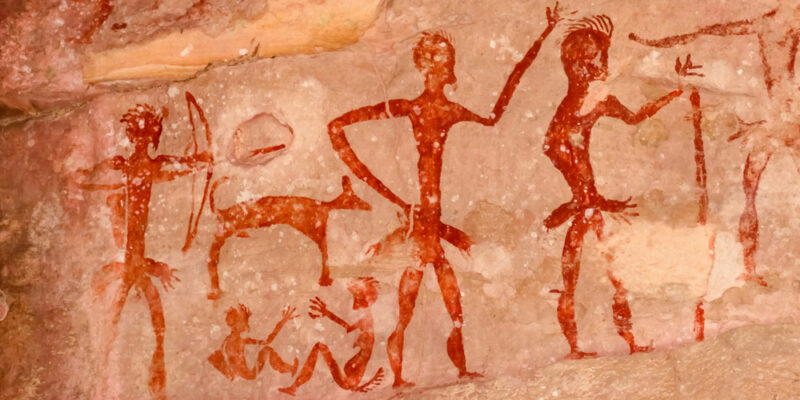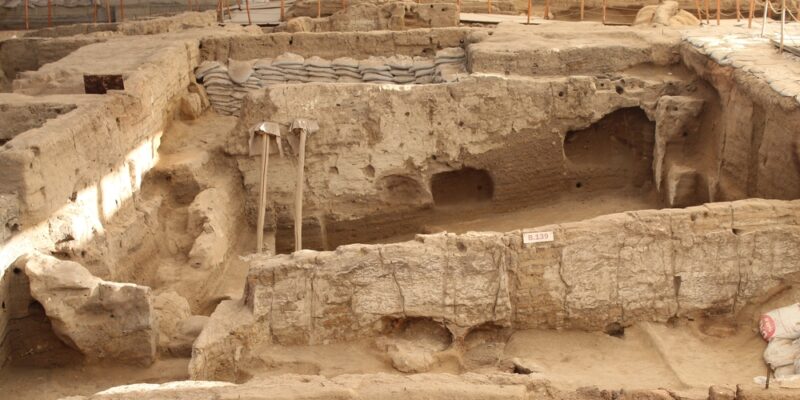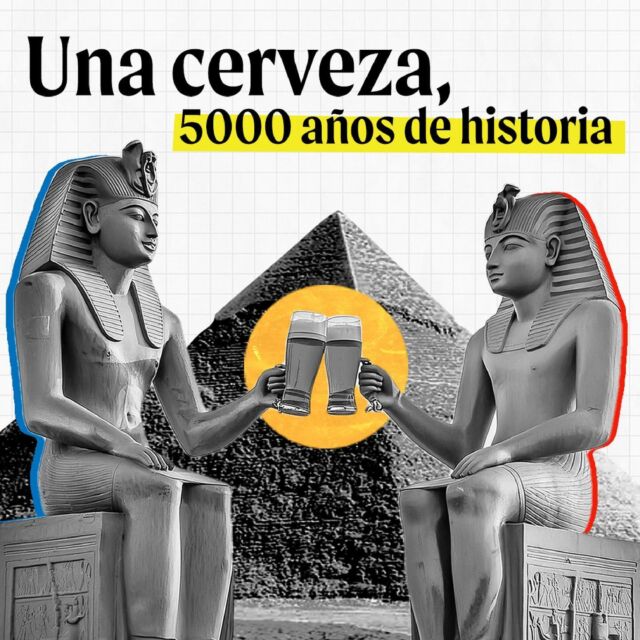We explain what the Stone Age was, and explore its characteristics and stages. In addition, we discuss human ancestors, and more.

What is the Stone Age?
The Stone Age is the earliest prehistoric period, characterized by the widespread use of stone as a fundamental element in human societies. It lasted from the invention of the first tools, almost 3 million years ago, to the discovery of metals, around 4,000 BC.
The Stone Age is divided into three periods: the Paleolithic, the Mesolithic, and the Neolithic eras. This is an archaeological periodization, based on the identification of stages in the development of material technology and tool manufacturing techniques.
- See also: Prehistory
Characteristics of the Stone Age
The Stone Age was marked by:
- Evolution of the human species and existence of different genera of hominids that populated different parts of the world.
- Organization into small societies with nomadic lifestyle during the Paleolithic period.
- Use of stone as the main element for the creation of tools and constructions, along with wood, bone, and other materials extracted from nature.
- Climatic changes resulting from the glaciation period.
- The emergence of a sedentary lifestyle and the development of farming and animal husbandry methods during the Neolithic period.
- See also: Human evolution
Stone Age periods

The Stone Age is divided into three broad periods:
- Paleolithic. It is the longest period, extending from the evolution of the first hominids to the development of food production methods (agriculture and animal husbandry), and a sedentary lifestyle. Paleolithic peoples were nomadic, they were organized into small groups, and their economy was based on hunting and gathering.
- Mesolithic. It includes the first economic changes carried out by some societies, leading to the development of an agricultural and livestock-based economy. These peoples also established the first seasonal settlements.
- Neolithic. It was marked by the advancement of agriculture and cattle raising, and the settlement of populations around cultivated areas. The period also witnessed the creation of pottery and the refinement of techniques for working stone, bone, and ivory.
Technological development in the Stone Age

A distinctive feature distinguishing humans from other animals was the development of technology, that is, the ability to transform objects from nature into tools. Humans used hard stones (such as flint and obsidian), wood, and animal bones and antlers to make tools.
Human groups used various tool-making techniques throughout the Stone Age.
During the Paleolithic period
- Percussion technique. It consisted of striking one stone against another or against an object that acted as a chisel to produce a sharp-edged tool.
- Pressure flaking. Using a bone artifact, specific areas of the stone tool were pressed to carve edges and achieve a sharper blade.
- Polishing technique. Stone was worked by rubbing it to shape and sharpen its edge. More fragile materials, like animal bones or antlers, were shaped on stone blocks.
During the Neolithic period
- Modeling technique. It consisted of stacking rolls of clay until the desired height of a ceramic piece was achieved. It was then smoothed with the hands to shape it, and left to dry, before being baked in kilns.
- Pottery wheel technique. The invention of the potter's wheel allowed for more diverse shapes of ceramic vessels and finer edges.
Hominization process

During the Stone Age, the process of hominization took place, encompassing the biological and cultural changes the human species underwent until it developed modern human characteristics.
Australopithecus is considered to be the first human ancestor. It is a genus of hominids that existed 4 million years ago and which was able to adapt to the climatic changes in Africa that transformed the rainforest into a savanna. Australopithecus were bipedal, i.e. they walked on two legs, freeing their hands to grasp objects and use basic tools.
The following are the evolutionary stages of homos:
- Homo habilis. It presented a more rounded skull, larger molars, a less protruding jaw, and enhanced motor skills. This genus lived around 2.5 million years ago across the African continent. Its name makes reference to its ability to craft tools and build dwellings.
- Homo erectus. Distinguished by a larger cranial cavity, robust body, and greater height. This genus lived around 1.8 million years ago. The name makes reference to the fact that it was the first species to walk entirely upright. They learned to control fire, engaged in animal hunting, and crafted stone axes.
- Neanderthal Man and Homo sapiens. These are two genera exhibited a wider jaw opening and a large cranial capacity. They emerged around 200,000 years ago, and was distinguished by the use of more sophisticated tools and the burial of their dead.
- Homo sapiens sapiens. It would have emerged around 100,000 years ago, and is the genus that includes modern humans. It was distinguished by cultural traits such as language and the performance of rites. Until 30,000 years ago, homo sapiens and homo sapiens sapiens coexisted in Africa, Asia, and Europe.
Explore next:
References
- Fernández Martínez, V. M. (2007). Prehistoria. El largo camino de la humanidad. Alianza Editorial.
- Fernández Vega, A. M., Cabrera Valdes, V. y Muñoz Amilibia, A. M. (2008). Prehistoria. Universidad Nacional de Educación a Distancia.
- “Stone Age”. History.
- “Stone Age”. Britannica.
- “Stone Age”. Ancient .
- “Los primeros humanos y las primeras sociedades”. Revista Components.
- “La época de la piedra antigua”. La verdad.
- “Homo erectus”. BBC.





Was this information useful to you?
Yes NoThank you for visiting us :)